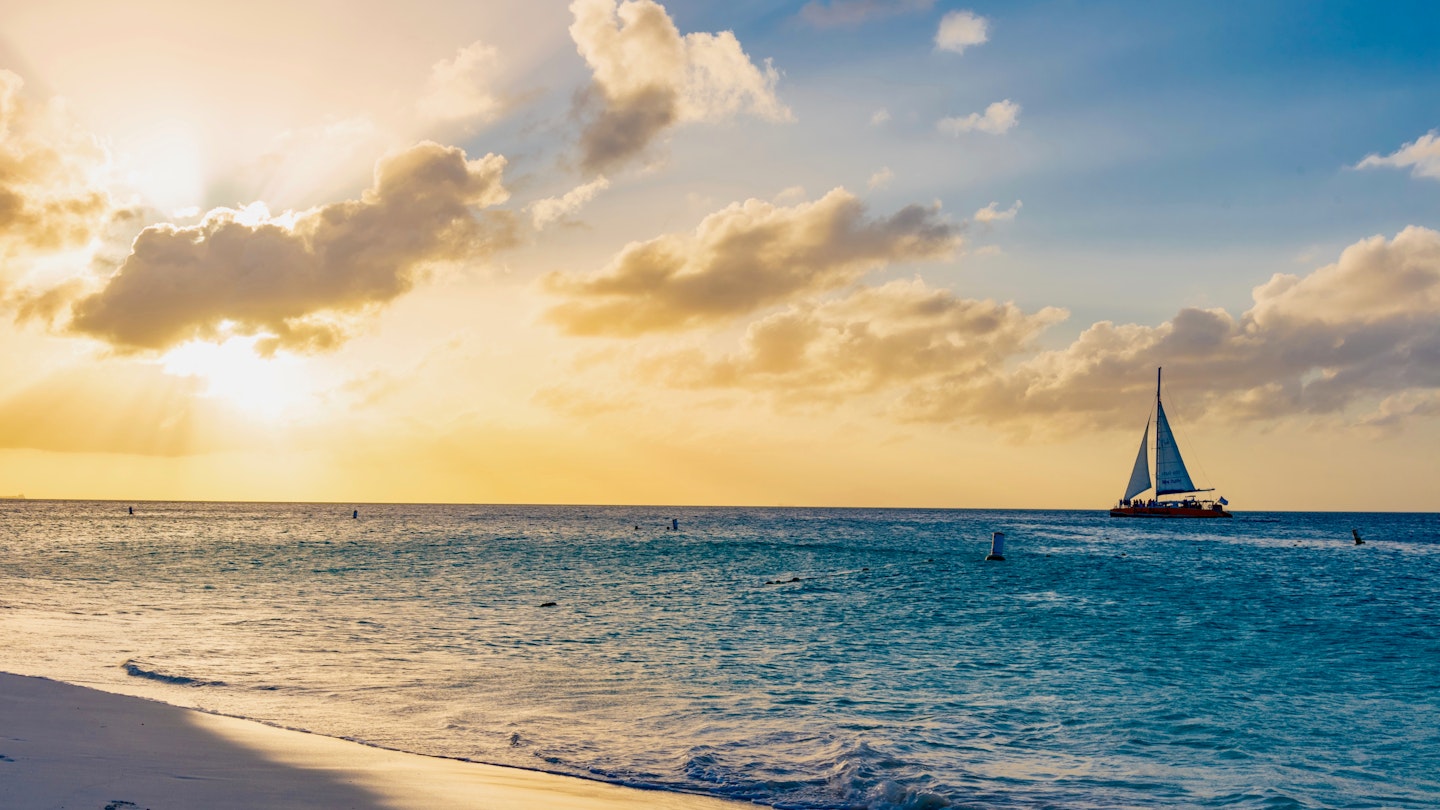Summary
Discovering the Best Times to Visit Aruba with iBestTravel
Coastal cacti collide with white sand beaches and turquoise tides in Aruba. This tiny Caribbean nation sits just 15 miles off the coast of Venezuela. Despite its proximity to South America, Aruba primarily hosts US tourists who have transformed the island into a Westernized playground of booze cruises, ATV excursions, and resorts.
This combination makes Aruba one of the best Caribbean islands to visit for US travelers seeking the comforts of home in an exotic location. However, your experience can vary dramatically depending on when you go.
High Season: Mid-December to Mid-April
Best Time for Beach Lovers
Unlike many Caribbean destinations, weather does not significantly influence Aruba’s peak season. Instead, this season is determined by colder weather in North America.
During high season, Aruba’s capital city, Oranjestad, is bustling with activity. Consequently, expect to pay premium rates for lodging, dining, and experiences from mid-December to mid-April. Hotels on popular beaches such as Eagle Beach and Palm Beach can charge nearly $1000 per night in the most exclusive spots. Therefore, making reservations several months in advance is essential.
Shoulder Season: Mid-April to August
Best Time for a Diverse Crowd
The ideal opportunity for savings and socializing occurs from late spring to late summer in Aruba. Warmer temperatures in the US and Canada result in fewer flight options from North America.
Expect lodging rates to drop by 20 to 30% during the shoulder season, with a more diverse crowd of visitors, notably Europeans taking summer vacations and South Americans traveling north from their winter. While US tourists will still be prevalent, the lower rates and consistent breezes make Aruba attractive to a diverse range of travelers.
Low Season: September to Mid-December
Best Time for Budget Travelers
The cheapest time to visit Aruba is during the autumn months. As the trade winds subside in September, visitors can find significant discounts on lodging—often up to 50% less than peak season rates.
This period is also ideal for snorkeling, as lighter winds minimize surface waves. Although tour operators might reduce the number of outings per week, visitors may find themselves in smaller groups and enjoying shorter wait times compared to peak season.
When is Hurricane Season in Aruba?
The southern Caribbean generally faces fewer hurricane threats than the northern Caribbean. While hurricanes can occasionally alter their paths and impact Aruba, it typically remains one of the best places in the Caribbean to enjoy pleasant weather during peak storm season, which usually spans early summer to autumn.
January
During high season, Carnival brings parades and revelry to the streets of Oranjestad and San Nicolas. Visitors can enjoy vibrant costumes and lively calypso music while celebrating the island’s culture. The highlight of the Carnival season is the Tivoli Lighting Parade, where glittering lights dance from floats and costumes through the tropical night.
Key Events: Aruba Carnival Season, Dande, Betico Croes Day, Aruba Island Fest (San Nicolas).
March
Aruba celebrates its flag day on March 18 with fireworks marking the occasion. This day is often accompanied by folklore presentations and joyful singing of the national anthem by local children.
Key Events: National Anthem and Flag Day, Aruba Island Fest (San Nicolas).
May
The annual Soul Beach Music Festival elevates beach parties and nightclubs in Palm Beach and Oranjestad with music and comedy, often featuring international artists like DJ Jazzy Jeff and Chaka Khan. This festival occasionally coincides with the Aruba Food & Wine Festival.
Key Events: Aruba Soul Beach Music Festival, Aruba Food & Wine Festival, Aruba Island Fest (San Nicolas).
June
June brings bonfires as locals gather to commemorate Dera Gai, or St. John’s Day. This authentic festival of storytelling and music symbolizes an Aruban tradition. Historically, men would compete to jump over bonfires, while fruit roosters were buried as part of the festivities, though the latter is no longer practiced.
Key Events: Dera Gai (St. John’s Day), International Triathlon, Aruba Summer Music Festival, Aruba Island Fest (San Nicolas).
July
In July, windsurfers and kite-surfers from across the globe arrive to compete in a contest fueled by the trade winds. The Hi-Winds Tournament generally takes place near the upscale resorts of Palm Beach, providing excellent opportunities for people-watching.
Key Event: Aruba Hi-Winds Kitesurfing & Windsurfing Tournament.
October
While American food is widely available in Aruba, those who dine without experiencing the local culinary traditions miss an important aspect of the culture. Aruba boasts more than 90 ethnic groups, making its kitchen a melting pot of South American, European, and Caribbean flavors—showcased during Aruba Restaurant Week.
Key Event: Eat Local Aruba Restaurant Week.
November
In November, Aruba hosts its beach tennis championships, substituting traditional racquets with paddles and swapping formal attire for beachwear. The Aruba Beach Tennis Open combines sport and casual fun, set against the backdrop of the colorful catamarans participating in a regatta.
Key Events: Aruba Open Beach Tennis Championships, Island TakeOver Festival, Aruba Art Fair, Aruba Catamaran Regatta.
December
December marks the arrival of Sint Nicolaas in Oranjestad’s Paardenbaai Harbor on the 5th, delighting local children. Later in the month, Aruba gears up for New Year celebrations and the upcoming Carnival festivities in January.
Key Events: Sint Nicolaas Day, New Year’s Eve.
This article was first published on April 12, 2021, and updated on May 4, 2022.




